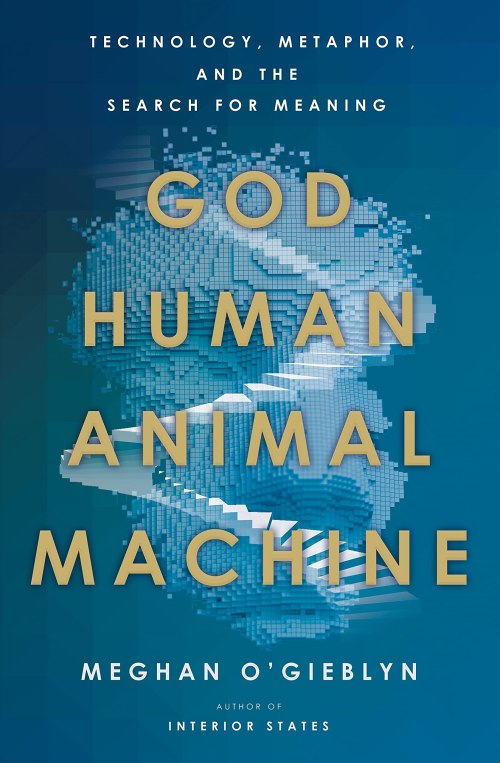[ad_1]
Horologist Thomas Mudge’s Fleet Street shop began offering watches which included the ingenious new mechanism of lever escapement sometime around 1769. Mudge’s design regulated the device’s movement with a T-shaped bit of gold or silver which pushed forward the timepiece’s gears to a much greater degree of accuracy. Soon lever escapement became a preferred instrument in English pocket watches, a mark of precession, elegance, and ingenuity.
When the philosopher William Paley considered lever escapement, he saw more than just delicate metal hidden behind the watch’s round face – he saw the human eye’s cornea and lens, the way that pupils expand or dilate depending. In Natural Theology, or Evidences of the Existence and Attributes of the Deity collected from the Appearances of Nature, printed in 1802, Paley said, “There must have existed at some time, and at some place or other, an artificer or artificers who formed the watch,” adding that “every manifestation of design, which existed in the watch, exists in the works of nature.” If a watch was evidence of Mudge’s existence, so too would something as elegant as our eyes be evidence of some greater Watchmaker. During the Enlightenment, theologians like Paley understood the interlocking aspects of nature, of humanity, and of God as mechanical. Meghan O’Gieblyn quips in her fascinating, brilliant, comprehensive, and beautiful new book God, Human, Animal, Machine: Technology, Metaphor, and the Search for Meaning that “All eternal questions have become engineering problems.”
Paley was neither the first nor the last to express what’s called the “watchmaker argument.” Variations are still promulgated by Intelligent Design proponents, though Darwinian natural selection has dulled the ticking a bit. What fascinates O’Gieblyn isn’t Paley’s efficacy, but rather his chosen analogy. If people who lived in earlier ages saw the human body as a vital, organic thing, pulsating with ineffable energy, then by Paley’s century it was a cunning machine. Far from being an archaic perspective, Paley’s passage was a testament to how all-pervading the mechanistic philosophy of the Enlightenment had become. O’Gieblyn writes that “To be human was to be a mill, a clock, an organ, a telegraph machine.” More than a century before Paley, Rene Descartes separated mind and body in his 1637 treatise Discourse on the Method, a landmark in the long history of Western disenchantment from the nominalism of Medieval scholastics, through the Protestant Reformation, and into modern positivism. Despite Paley being a pious Anglican, the thought-experiment firmly reflected the technological concerns of his age. As O’Gieblyn notes, “All perception is metaphor.”
Now that accurate time isn’t kept by pendulums or levers, but rather by a vibrating radioactive cesium nucleus at the U.S. Naval Observatory, mechanical metaphors have been traded in for digital ones, with the requisite comparison du jour being that of the computer. No longer is human anatomy described by recourse to pistons and gears, but rather in terms of hardware and software, with O’Gieblyn writing that “Cognitive systems are spoken of as algorithms: vision is an algorithm, and so are attention, language acquisition, and memory.” If Descartes saw a duality between mind and body, with the former the ghost which haunts the machine, then now Silicon Valley partisans are far more likely to see our brain as hardware and our thoughts (or “soul,” or “self,” or “mind”) as the bytes of a software program; though as O’Gieblyn notes “The metaphor easily slides into literalism.”
When Elon Musk refers to humans as “biological bootloaders,” that is the simple code which is used to initiate a more complex program, or philosopher Nick Bostrom doesn’t just compare reality to a simulation but argues that we actually are effectively in a video-game, it behooves us to take the clock apart, as it were. Since the emergence of modern cybernetics two generations ago, digital metaphors have become the dominant imagery for describing consciousness, and often the cosmos too. As with Paley’s imagery, they smuggle into an ostensibly secular age a sense of the numinous, so that “Today artificial intelligence and information technologies have absorbed many of the questions that were once taken up by theologians and philosophers: the mind’s relationship to the body, the question of free will, the possibility of immortality,” as O’Gieblyn writes. What she offers within God, Human, Animal, Machine is a deep reading of these digital metaphors to excavate the connotative implications of that rhetoric which lurks “in the syntax of contemporary speech.”
To describe God, Human, Animal, Machine as simply being “about” technology is to greatly reduce O’Gieblyn’s book, which is able to cover an astonishing range of subjects in a relatively short page count. With a rigor and a faith in her readers’ ability to follow complex arguments and understand rarefied concepts, O’Gieblyn charts not just the evolution of religious metaphor in relation to technology, but she also examines philosophies of mind like materialism, dualism, panpsychism, and idealism, with digressions on thinkers such as Bernardo Kastrup and Giulio Tononi; she interrogates the barely concealed millennialism of transhumanists who pine for the coming eschaton of the “Singularity” when we will supposedly enter what futurist Ray Kurzweil calls the “age of spiritual machines;” she details the rise of carceral surveillance capitalism and the eclipse of humanism in favor of burgeoning “Dataism.” Along the way O’Gieblyn dedicates space to everything from the uncanniness of Japanese robotic companion dogs to quantum mechanics, the Platonic Great Chain of Being to questioning whether or not it makes sense to describe the internet as conscious (possibly). By combining both a voracious curiosity with a deep skepticism, O’Gieblyn conveys what it’s like to live in our strange epoch, facing apocalypse with an Android phone.
O’Gieblyn’s most enduring contribution might be in diagnosing the ways in which technological change marks a rapidly shifting conception of what consciousness is. If the pre-modern world was one enchanted with meaning, where the very rocks and trees could convey messages to us and thought seemed distributed throughout the charged universe, then in an ironic way, the end result of the Scientific Revolution is now a world where once again immaterial objects seem endowed with mind, where robots converse with us and artificial intelligence seems to know us better than ourselves. “But it’s worth asking what it means to reenchant, or reensoul, objects within a world that is already irrevocably technological,” O’Gieblyn writes. “What does it mean to crave ‘connection’ and ‘sharing’ when those terms have become coopted by the corporate giants of social platforms?” Define our present as you will – post-modern, late capitalist – but O’Gieblyn has identified something deeper about the ways in which technological metaphors have been returned upon us, the developers of those same programs.
Ours is the future of Dataism, which “is already succeeding humanism as a ruling ideology.” According to O’Gieblyn, if the internet and other attendant technologies once promised a type of Neo-Enchantment, a zestful, pagan, energization of the previously inert and mechanistic world, then the Being resurrected by Silicon Valley is actually a “boundless alien deity… the God of Calvin and Luther.” Now we are increasingly monitored, evaluated, and categorized by algorithms, inscrutable bits of code that have long since surpassed the awareness of those who designed them, a growing consciousness of pure alterity that knows what we should buy, that knows what we should read. Mystics have long spoken of “kenosis,” the emptying out of the individual soul so that in negation we merge with the infinite. Collectively, we’ve seemed to reach what I’d call a “kenotic present,” where as O’Gieblyn writes the “central pillar of this ideology is its conception of being, which might be described as an ontology of vacancy – a great emptying-out of qualities, content, and meaning.” Surely this is something, but it’s not the transcendence and enlightenment once imagined by ecstatics. No longer is there much of a sense of what a soul is worth, but there can still be a price affixed to it. In the waning days of the Anthropocene – on the verge of something – it’s worth asking whether or not it’s God that we’ve constructed.

NONFICTION
God, Human, Animal, Machine
By Meghan O’Gieblyn
Doubleday Books
Published August 24, 2021

Ed Simon is a staff writer for The Millions and a widely published freelance writer. His most recent book is An Alternative History of Pittsburgh, and his Pandemonium: A Visual History of Demonology will be released this autumn. He can be followed on Twitter @WithEdSimon.
[ad_2]
Source link